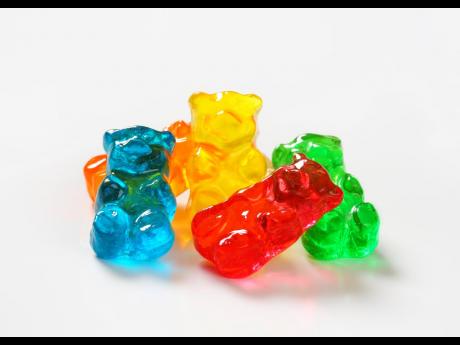Molly, rummy bears the new dangerous drug hurdle for NCDA
Once Patricia House is up and running again at its new location in Linstead, St Catherine, it will re-engage with the Gregory Isaacs Foundation to raise public awareness about the threat to young people from drug use, but with much more emphasis on the risk to their health from the latest drug on the scene, molly, as well as rummy bears.
June Wyndham-Isaacs, the widow of the late entertainer, is concerned about the growing acceptance of molly.
“I tell myself and the team that we have to get involved to get the youth to say no to drugs. Cocaine use is not so prevalent today, but other drugs are. In Gregory’s time, there wasn’t much education about drug use and addiction and people usually didn’t seek help until it was usually too late for them, when things gone way bad,” she shared with The Sunday Gleaner recently.
Wyndham-Isaacs underscored the importance of getting the message across to the youth who are into the use of the latest craze – molly (a toxic mix of unknown chemicals usually in capsule or powder) and rummy bears (small, fruit gummy bears candies soaked in rum overnight or longer and frozen).
“We want to raise the awareness with these new artistes who are into this new hype. QQ is our youth ambassador, and we want to get him into the schools to give talks, and even have one-on-one sessions with the young people to see how we can get them to abstain,” she said.
Executive director of the National Council on Drug Abuse (NCDA), Michael Tucker, who is also looking forward to the continuation of the partnership with the Gregory Isaacs Foundation, said the arrival of drugs in the form of pills such as molly is cause for concern, even as they continue to grapple with alcohol and nicotine abuse among young people.
“The troubling emergence of these pills is something which we have to watch. We know ganja causes a problem, we know alcohol causes a problem, but these pills, with some of the substances they are putting in them now, blow the youngsters’ minds,” he warned.
Tucker also warned of the abuse of fentanyl, a synthetic opioid that is 50-100 times stronger than morphine. Pharmaceutical fentanyl was developed for pain management treatment for cancer patients, applied in a patch on the skin. However, because of its powerful opioid properties, fentanyl is also being abused and is often added to heroin to increase its potency. It is also found in molly.
Medical professionals have warned that many drug users are being tricked into believing that they are purchasing heroin and actually don’t know that they are purchasing fentanyl – which often results in death from overdose.
In 2021, fentanyl and fentanyl analogues accounted for most drug overdose deaths in the United States, with 71,238 deaths. Compared with heroin, it is more potent, has higher profit margins, and, because it is compact, has simpler logistics.
Fentanyl analogues, such as acetylfentanyl, furanylfentanyl and carfentanil, are similar in chemical structure to fentanyl but not routinely detected because specialised toxicology testing is required. This is what makes molly so potentially dangerous, Tucker warns.
‘NOTHING TO MESS AROUND WITH’
“With all these pills that come in, a lot of them are not pure amphetamine. Sometimes the guys who make them mix other things in and will put cocaine in, and some of them will even put fentanyl in. So there is the possibility of these things being fatal and is something that we have to be so careful about and do a lot more education on, to tell the youngsters that this thing is nothing to mess around with,” said the NCDA executive director.
“They now have molly parties where you pay your admission at the gate and you get your alcohol along with party favours which include a dose of molly because it is a molly session.”
He continued, “The thing about rummy bears is that it is very available and what people don’t understand is that it is legal but you don’t really know what you’re getting in them. Where usually ganja is about eight to nine per cent THC (tetrahydrocannabinol, the principal psychoactive constituent of cannabis), these things are all 30 per cent in terms of strength.”
It was in a 1988 interview that Gregory Isaacs came out candidly about his cocaine addiction, using his life as a sort of cautionary tale as he lamented the incalculable price paid for the addiction he described as dangerous and costly – “with freedom, love, respect, money, friends, and privacy lost to and through drugs”.
“It’s the greatest college I’ve been to – the Cocaine High School – but also the most expensive school fees that I have ever paid … I learnt a lot from it, both good and bad. I wouldn’t encourage anybody to try it,” said the internationally renowned singer who died of lung cancer in 2010 at the age of 59.
Now his widow June Wyndham-Isaacs is committed to ensuring that, in keeping with Gregory’s wishes, she can save some youngsters from setting foot on that dangerous pathway.
christopher.serju@gleanerjm.com
• Molly – a toxic mix of unknown chemicals usually in capsule or powder.
• Rummy bears – small, fruit gummy bears candies soaked in rum overnight or longer and frozen.
• Fentanyl – a synthetic opioid that is 50-100 times stronger than morphine.





